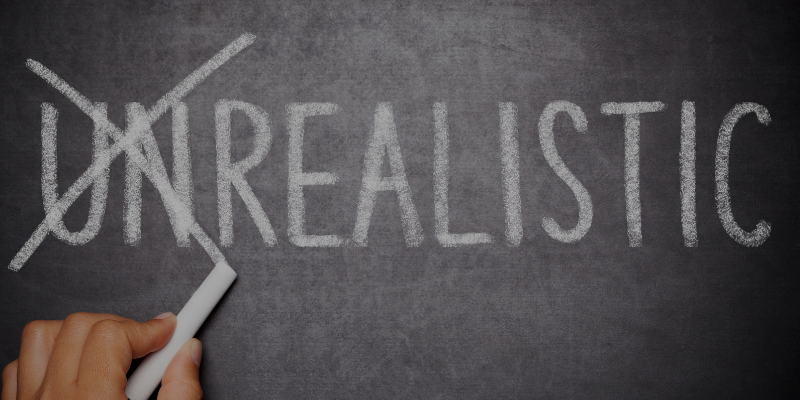How to Involve Stakeholders in Requirements Validation
Validation is concerned with whether the system fulfills its intended purpose and meets the user’s requirements. It answers the question: "Are we...

Unrealistic expectations from requirements management stakeholders can pose significant challenges to a project. However, addressing these expectations early and effectively can help manage potential conflicts and keep the project on track.
This blog shares eight ways to deal with unrealistic stakeholder expectations.
The first step when working with stakeholders is to engage in detailed discussions to fully understand their expectations. This means asking questions to clarify what they want, why they want it, and how they envision it being achieved.
Following these discussions, you should be able to determine any unrealistic expectations, and whether they stem from a lack of information, misunderstandings, or external pressures. Understanding the root cause will help you address the issue more effectively.
You can help stakeholders understand the technical, financial, or time constraints associated with their expectations by sharing relevant information and your expertise. Data, case studies, or past experiences can provide context and help them to better understand.
At the outset, make sure to clearly outline the project’s scope, budget, timeline, and limitations, reiterating these boundaries whenever unrealistic expectations arise. Sometimes stakeholders may not grasp the complexities involved. Visual aids like charts, timelines, and prototypes can help you illustrate why certain expectations may not be feasible.
Innoslate’s Quality Checker can also assist with this by flagging any non-feasible attributes within requirements.
If an expectation is unrealistic, propose viable alternatives that can achieve similar outcomes within the project’s constraints. This shows that you’re committed to meeting their needs as much as possible.
An iterative approach where the project delivers in phases would be a great suggestion that allows stakeholders to see progress and adjust their expectations as the project evolves.
Tip: Innoslate Administrators can define roles in the software with different permissions so all stakeholders can be involved at different levels.
To address the gap between their expectations and what is feasible, engage stakeholders in the decision-making process. Keeping them in the loop by having them contribute ideas and work together will make finding solutions much easier.
Scenario analysis can also show stakeholders the implications of different decisions, such as extending timelines, increasing budgets, or reducing scope. This helps them understand the trade-offs involved.
Related Article: 9 Ways to Align Requirements with Stakeholder Needs
Once a consensus is reached, document the agreed-upon expectations, scope, and any changes. You can prevent future disputes by having all stakeholders sign off on these documents.
You should also establish a formal change control process to manage any changes to the project scope or requirements. This process should include an impact assessment and require stakeholder approval.
Regular updates on the project’s progress keep stakeholders informed about any challenges or risks that could affect their expectations. In addition, mechanisms for stakeholders to provide feedback continuously will help you address any concerns before they become major issues.
If a stakeholder’s expectations are particularly challenging and cannot be resolved through regular channels, escalate the issue to higher management or project sponsors for support and resolution. In some cases, involving a neutral third-party mediator can help resolve conflicts between stakeholders and the project team.
A post-project review will help you assess how well stakeholder expectations were managed and what could be improved in future projects. You can also refine your approach to managing stakeholder expectations in future projects by using lessons learned.
Download the Innoslate Lessons Learned template from the Digital Curation Station
By following this approach, you can effectively manage and align stakeholder expectations with the realities of the project, reducing the risk of conflict and increasing the likelihood of a successful outcome. Clear communication, continuous engagement, and the use of effective tools like Innoslate will ensure your requirements are realistic and meet project needs.
Have questions about model-based systems engineering or requirements management? Talk to an expert and see how Innoslate can streamline your projects from start to finish.

Validation is concerned with whether the system fulfills its intended purpose and meets the user’s requirements. It answers the question: "Are we...

Aligning requirements with stakeholder needs and expectations is a cornerstone of successful systems engineering. When done effectively, this process...

The success of project management hinges greatly on effective requirements management, which entails the identification, documentation, and control...